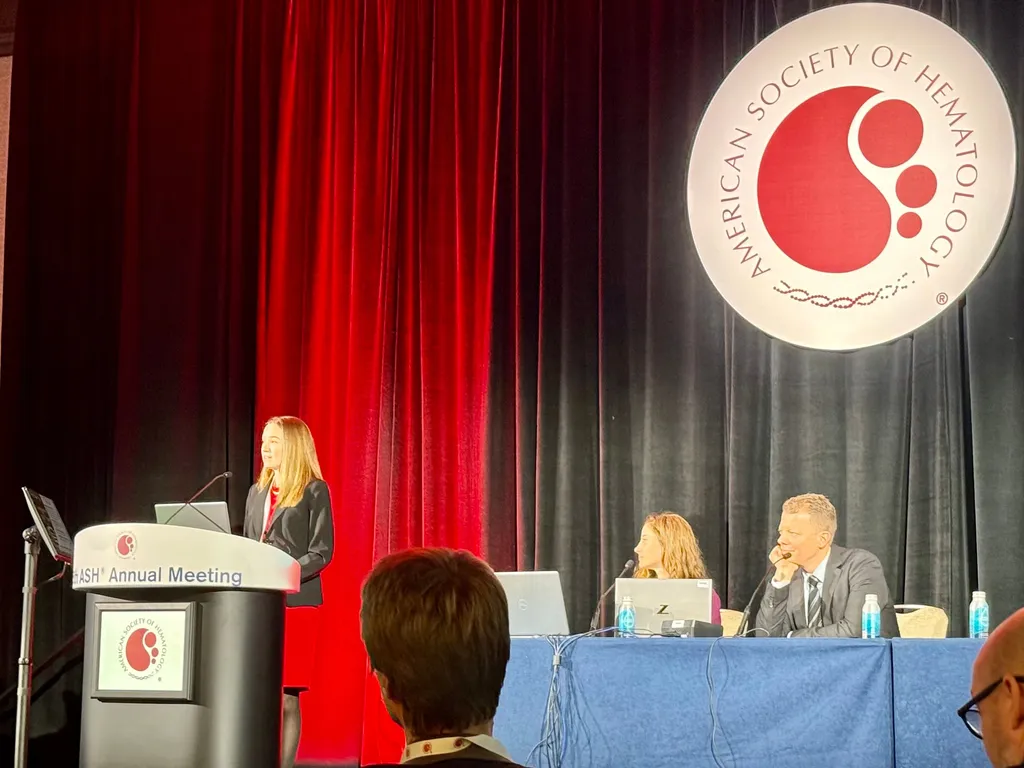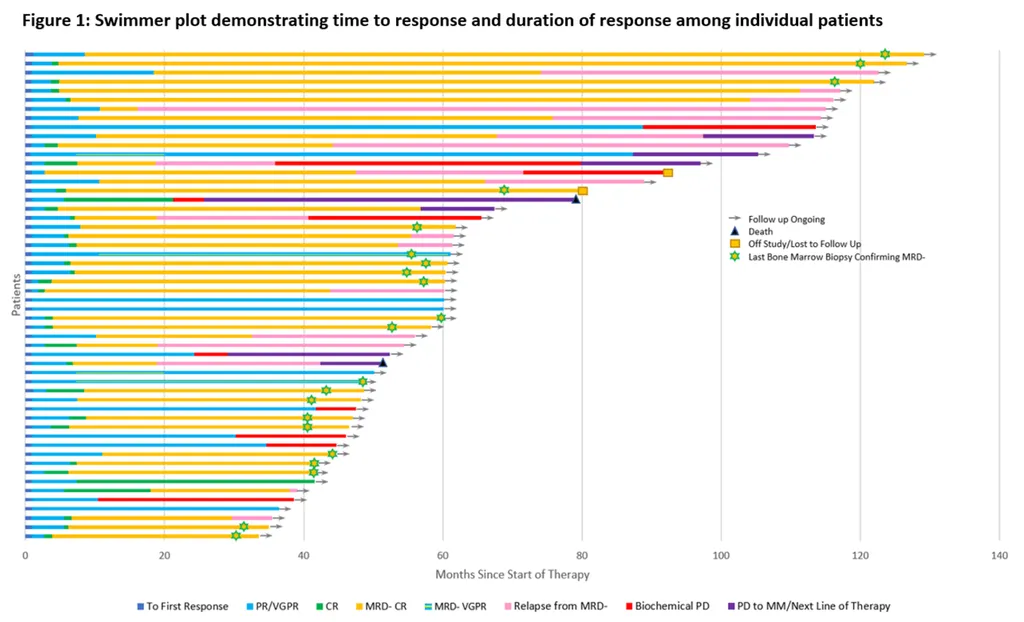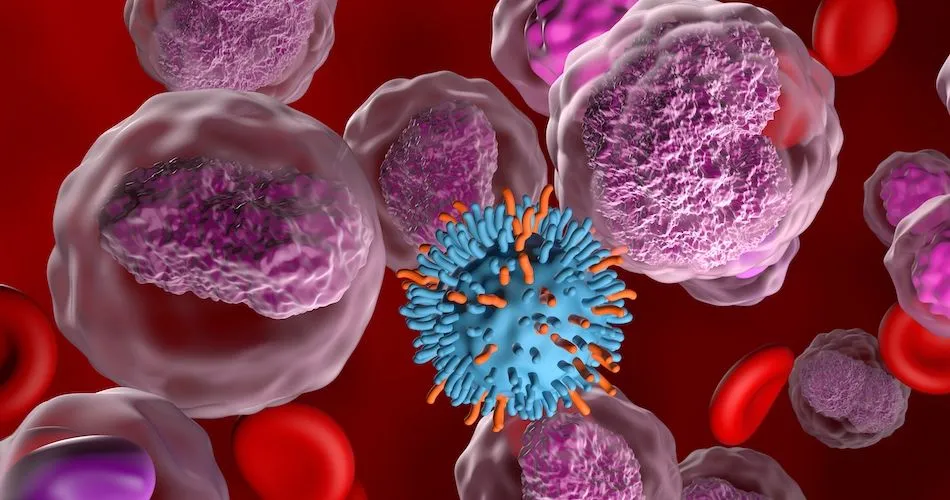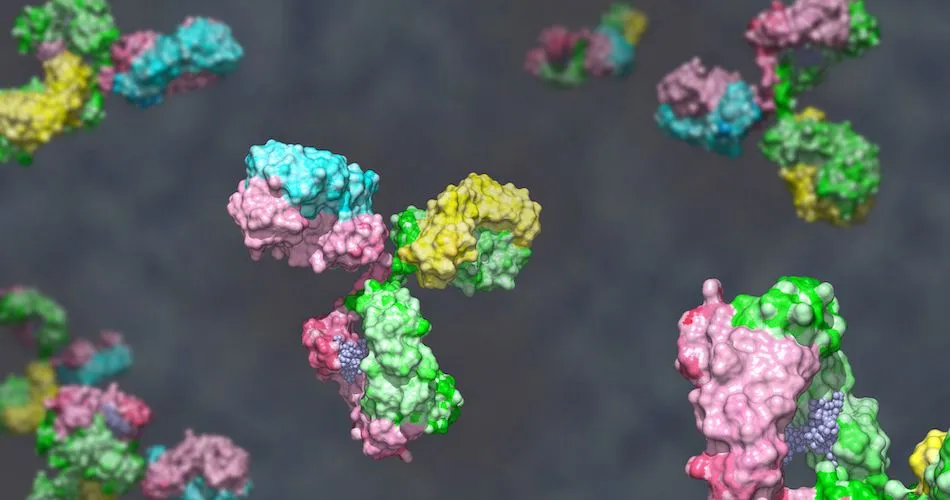ASH 2023: High-Risk Smoldering Myeloma: To Treat or Not to Treat?

Without the benefit of a crystal ball to see what the future holds, doctors and patients are forced to play the odds when it comes to determining the best treatment options. This is a particularly tough choice when considering options for smoldering myeloma patients.
By definition, these patients do not have active disease, and we know a percentage of them will never progress to active disease. That is not the case for all, however, and is a “wait and see” approach truly the best option for everyone?
Specifically, in the case of high-risk smoldering myeloma, whether to treat or not to treat is becoming an even more relevant question.
Studies have shown that patients with high-risk smoldering myeloma have a 75% chance of progressing to symptomatic multiple myeloma within five years, with a median time to progression of less than two years. (Lakshman et al., Blood Cancer J 2018) (Rajkumar et al., Blood 2015). What if we could stop the progression?

Study Details
During ASH 2023, Elizabeth Hill, MD, from the National Cancer Institute presented the follow-up data results of a phase 2 trial in which high risk smoldering multiple myeloma patients were given carfilzomib, lenalidomide, and dexamethasone for eight 28-day cycles, followed by two years of lenalidomide maintenance therapy (KRd-R) in order to prevent progression of symptomatic multiple myeloma (Kazandjian et al., JAMA Onc 2021).
A total of 54 patients participated in the study, which included enrollment and treatment arms running from May 2012 to July 2020. The data cut-off for this follow-up analysis was July 2023. The median follow-up time was 60.2 months, with a range of 33.7 to 127.8 months. Patients in this study tolerated the treatment well, with no grade 4 non-hematologic adverse events and manageable low-grade toxicities.
Study Results

The swimmer plot graphic above (Figure 1.) provides an excellent visual representation of the study’s findings. Each line represents a patient in this trial, with the yellow portions on the plot highlighting the time each patient remained in the optimal response, minimum residual disease negative complete response (MRD negative CR). Conversely, the red and purple areas identify whenever a patient progresses from smoldering myeloma to multiple myeloma.
Dr. Hill reported that “all patients attained a partial response or better and the median duration of response has still not been reached. At 60 months, 75.1% of patients maintained their response.” Additionally, only 5 out of 54 patients progressed to clinical multiple myeloma. The median duration of MRD-negative complete response was 57.5 months and at 5 years, 92.7% of patients had not progressed to overt myeloma.
These numbers are notable improvements over the expected number of patients we would have predicted to progress to active myeloma during this same time based on earlier studies of high-risk smoldering patients.
It is important to consider that this study included a relatively small number of patients who were identified as high-risk, and it is “unclear if the beneficial outcomes seen in high-risk smoldering multiple myeloma interventional studies are due to treatment of more susceptible disease or inherently less aggressive disease.” Dr. Hill and colleagues concluded that “future studies must capture and select high-risk profiles based on validated genomic signatures.”
Further Insights
To treat or not to treat remains the question for doctors and patients with high risk smoldering multiple myeloma. It is a highly personal decision that relates not only to a patient’s physical health, but also their mindset. For patients who feel a “wait and see” approach is akin to holding a ticking time bomb, they may feel best served by seeking opinions from doctors who support earlier intervention.
Regardless of risk level or attitude toward treatment or not, smoldering multiple myeloma patients are encouraged to undergo routine monitoring of their key labs to hopefully identify progression at the biochemical stage and avoid disease progression that damages kidneys and/or bones. High-risk smoldering patients may wish to advocate for increased frequency of monitoring.
Having a myeloma specialist on your care team is also advised, even at the smoldering stage. Specialists can help ensure the proper tests are being monitored and they are more likely to stay up to date on new research and guidelines for treating smoldering myeloma. Additionally, you will be ready to hit the ground running if the disease progresses.
Treatment options for all myeloma patients cover a wide range -- from conservative to more aggressive approaches. There is typically not one, clear “right” answer, but often a few “best options” and, ultimately, it boils down to a very personal decision between you and your care team. This is particularly true with high-risk smoldering myeloma.
We all wish we had a crystal ball to see which decisions would have the best outcome down the road. Wouldn’t that be nice? For our own mental health, we make the best decision we can with the data we have at the time, and then, to the best of our ability, we move forward.
As new data comes in, new decisions can be made, always looking forward. The myeloma marathon has many twists, turns, peaks, and valleys, but by continuing to stay informed on the latest research, having a myeloma specialist on our care team, and being open to new treatment options, we can run our best race.
ASH 2023 Resources
Would you like to watch ASH 2023 myeloma research interviews from the investigators themselves? Click "ASH 2023" here: HealthTree University Conference Coverage
To read other ASH 2023 articles, click here: HealthTree 2023 ASH Articles
Without the benefit of a crystal ball to see what the future holds, doctors and patients are forced to play the odds when it comes to determining the best treatment options. This is a particularly tough choice when considering options for smoldering myeloma patients.
By definition, these patients do not have active disease, and we know a percentage of them will never progress to active disease. That is not the case for all, however, and is a “wait and see” approach truly the best option for everyone?
Specifically, in the case of high-risk smoldering myeloma, whether to treat or not to treat is becoming an even more relevant question.
Studies have shown that patients with high-risk smoldering myeloma have a 75% chance of progressing to symptomatic multiple myeloma within five years, with a median time to progression of less than two years. (Lakshman et al., Blood Cancer J 2018) (Rajkumar et al., Blood 2015). What if we could stop the progression?

Study Details
During ASH 2023, Elizabeth Hill, MD, from the National Cancer Institute presented the follow-up data results of a phase 2 trial in which high risk smoldering multiple myeloma patients were given carfilzomib, lenalidomide, and dexamethasone for eight 28-day cycles, followed by two years of lenalidomide maintenance therapy (KRd-R) in order to prevent progression of symptomatic multiple myeloma (Kazandjian et al., JAMA Onc 2021).
A total of 54 patients participated in the study, which included enrollment and treatment arms running from May 2012 to July 2020. The data cut-off for this follow-up analysis was July 2023. The median follow-up time was 60.2 months, with a range of 33.7 to 127.8 months. Patients in this study tolerated the treatment well, with no grade 4 non-hematologic adverse events and manageable low-grade toxicities.
Study Results

The swimmer plot graphic above (Figure 1.) provides an excellent visual representation of the study’s findings. Each line represents a patient in this trial, with the yellow portions on the plot highlighting the time each patient remained in the optimal response, minimum residual disease negative complete response (MRD negative CR). Conversely, the red and purple areas identify whenever a patient progresses from smoldering myeloma to multiple myeloma.
Dr. Hill reported that “all patients attained a partial response or better and the median duration of response has still not been reached. At 60 months, 75.1% of patients maintained their response.” Additionally, only 5 out of 54 patients progressed to clinical multiple myeloma. The median duration of MRD-negative complete response was 57.5 months and at 5 years, 92.7% of patients had not progressed to overt myeloma.
These numbers are notable improvements over the expected number of patients we would have predicted to progress to active myeloma during this same time based on earlier studies of high-risk smoldering patients.
It is important to consider that this study included a relatively small number of patients who were identified as high-risk, and it is “unclear if the beneficial outcomes seen in high-risk smoldering multiple myeloma interventional studies are due to treatment of more susceptible disease or inherently less aggressive disease.” Dr. Hill and colleagues concluded that “future studies must capture and select high-risk profiles based on validated genomic signatures.”
Further Insights
To treat or not to treat remains the question for doctors and patients with high risk smoldering multiple myeloma. It is a highly personal decision that relates not only to a patient’s physical health, but also their mindset. For patients who feel a “wait and see” approach is akin to holding a ticking time bomb, they may feel best served by seeking opinions from doctors who support earlier intervention.
Regardless of risk level or attitude toward treatment or not, smoldering multiple myeloma patients are encouraged to undergo routine monitoring of their key labs to hopefully identify progression at the biochemical stage and avoid disease progression that damages kidneys and/or bones. High-risk smoldering patients may wish to advocate for increased frequency of monitoring.
Having a myeloma specialist on your care team is also advised, even at the smoldering stage. Specialists can help ensure the proper tests are being monitored and they are more likely to stay up to date on new research and guidelines for treating smoldering myeloma. Additionally, you will be ready to hit the ground running if the disease progresses.
Treatment options for all myeloma patients cover a wide range -- from conservative to more aggressive approaches. There is typically not one, clear “right” answer, but often a few “best options” and, ultimately, it boils down to a very personal decision between you and your care team. This is particularly true with high-risk smoldering myeloma.
We all wish we had a crystal ball to see which decisions would have the best outcome down the road. Wouldn’t that be nice? For our own mental health, we make the best decision we can with the data we have at the time, and then, to the best of our ability, we move forward.
As new data comes in, new decisions can be made, always looking forward. The myeloma marathon has many twists, turns, peaks, and valleys, but by continuing to stay informed on the latest research, having a myeloma specialist on our care team, and being open to new treatment options, we can run our best race.
ASH 2023 Resources
Would you like to watch ASH 2023 myeloma research interviews from the investigators themselves? Click "ASH 2023" here: HealthTree University Conference Coverage
To read other ASH 2023 articles, click here: HealthTree 2023 ASH Articles
about the author
Diane Kennedy
Diane Kennedy is a care partner to her husband, Todd, who was diagnosed with multiple myeloma in 2017. She spent her career working in marketing and as a freelance writer. In 2020 she and Todd decided to transition from their professional careers to focus their efforts as patient advocates, Myeloma Coaches, and co-leaders of the SoCal Myeloma Community Support Group.
More on Conferences
Trending Articles
Get the Latest Large B Cell Lymphoma Updates, Delivered to You.
By subscribing to the HealthTree newsletter, you'll receive the latest research, treatment updates, and expert insights to help you navigate your health.
Together we care.
Together we cure.
3x Faster.









